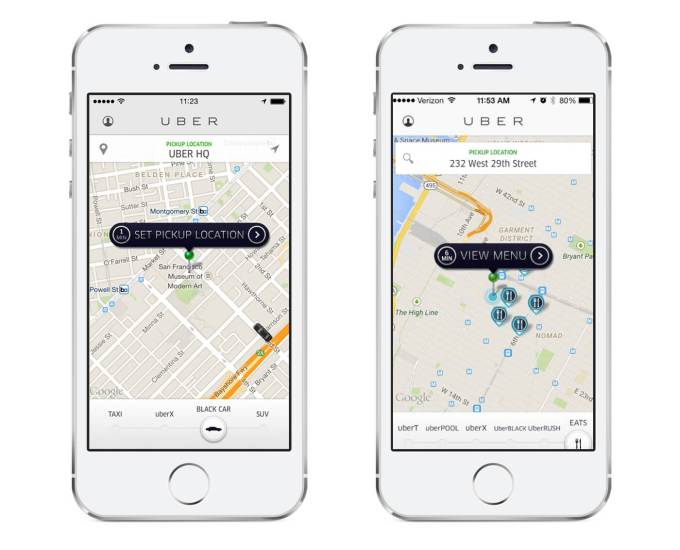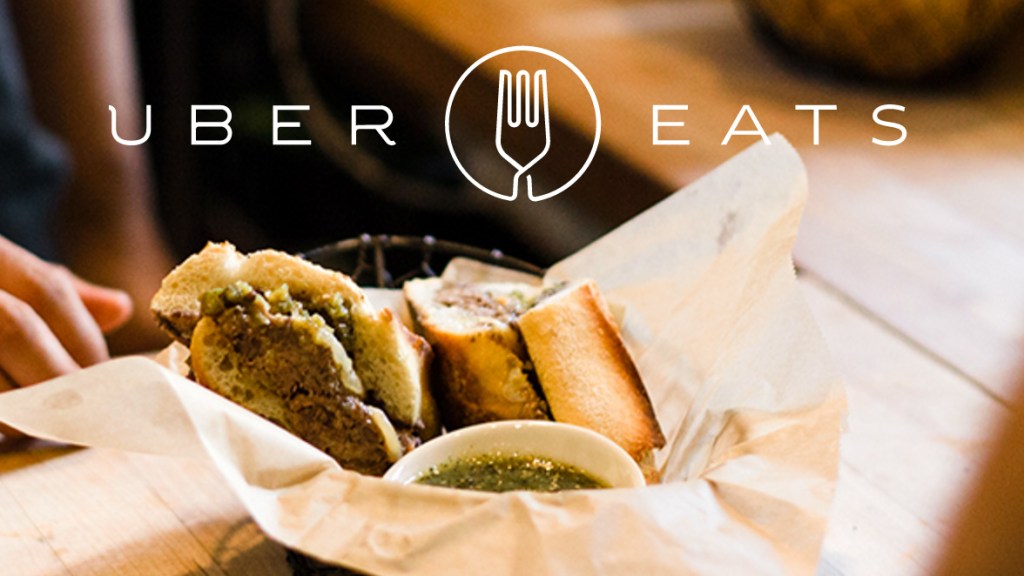Dan Storbaek
Most people are familiar with Uber as the ridesharing king; it has taken the world by storm, and with much fanfare. Less has been written about its new family member, UberEATS, which now delivers lunch within 10 minutes with the push of a button.
What’s interesting about the two ventures is the playbook that Uber uses to identify, design and market them in their Uber world. Perhaps we ought to take a deeper look at how Uber might expand into different industries and become a frontrunner in the on-demand economy (ODE).
Besides having a war chest of financial resources available, we now start to see a powerful playbook being unleashed. Uber continues to experiment and refine their approach to enter and market these services, but a number of interesting patterns are becoming apparent as the two ventures, Uber and UberEATS, are rolling out internationally.
If you think Uber is about ridesharing, forget it — they are much more. Here is how I think they will Uber-ize the world:
Step 1: Identify An Existing Industry With A Great Fit For The On-Demand Economy
It’s becoming a bit of a cliché to say “Uber-for-X,” but it does help to simplify things when everything is available as an app. But in the eyes of an investor or competitor, it gets a bit more interesting:
Founder: “We are the Uber of cleaning.”
VC: “What would you do if Uber entered the cleaning market?”
An existing market served by a large number of local and regional incumbents are great signs of existing markets yet to be simplified by software and new ideas. The ODE is your pizza delivery but on a scale that has the ability to topple not only industry leaders, but entire business sectors. With Uber, and many others entering the market, some have declared the taxi industry dead as we know it.
According to SherpaVentures, on-demand enterprises must reach the mass market cheaply while removing anonymity. UberRides does this with their free app that includes driver ratings, which provides a form of self-policing.
Furthermore, the ODE efficiently mobilizes supply chains and workforces while enabling collaboration and asset sharing. Uber harnesses the supply effortlessly because their workforce is essentially any person with a smartphone and a car. Sharing and access by phone is nothing new, but Uber was one of the first to apply it to the ODE in a massive scale.
Much of this is achieved thanks to GPS technology that puts all potential Uber drivers on the map at once. Lastly, all transactions are done by app, so no cash changes hands at any time. The process is slick and clean, and it has attracted millions of users worldwide.
Of course, Uber’s huge success has inspired a wide range of new marketplaces, such as:
-
Axiom (lawyers on call)
-
BlackJet (private jets)
-
Bloom That (flower delivery)
-
Heal (doctor house calls)
-
Luxe (valet parking)
-
Postmates (delivery from anywhere)
-
Push For Pizza (you guessed it)
-
Saucey (alcohol delivery)
-
Shyp (package packing, pickup and shipping)
-
Sprig (cooked meal delivery)
-
TaskRabbit (errands and odd jobs)
-
Washio (laundry service)
-
Zeel (in-home massage therapist)
The exact number of these startups is unknown, but nearly $1.4 billion was invested in these Uber-for-X companies in the first three quarters of 2014. But the questions remain: Which one of these new ventures will make it? Will Uber go there?
Step 2: Leverage An Existing Network
For Uber to become successful, it required the network effect to take hold firmly and quickly. Just as a social network has no value unless it lives in a network of devices, Uber drivers and passengers require a network to thrive. More drivers allow for more passengers, which allows for more drivers, and so on.
In the short term, more Uber passengers and drivers allowed for a drop in prices, which attracted even more users. The result is somewhat magical, where momentum builds upon itself.
To kickstart growth — and accelerate beyond competition — UberEATS leverages the existing Uber platform. They have the technology and infrastructure. They have drivers and cars. They have users and a well-known brand. They have a perfected playbook.
While newer startups have to build a complete marketplace bottom-up, Uber can leverage their existing setup. They have massive leverage and the upside of using their know-how to become a dominant player in the ODE. It’s a massive undertaking, but they have the financial muscles and investor confidence to back them.
Step 3: One-Click Interface
Uber was born on a snowy night in Paris in 2008 when the two founders could not get a cab. They wanted a dead-simple app that could get them a car with the push of a button.
This premise has not only survived, but has become the focus and marketing message you hear around Uber:
-
Push the button to get a ride.
-
Push the button and lunch is delivered.
-
Push the button to…what’s next?

The simplicity of pushing a button is somewhat genius, which has been copied by lots of other services and physical counterparts, such as Amazon Dash Button and Swedish Flic.
For Uber, the one-click interface is an essential part of the user experience and marketing message, and thus remains a key element in their playbook.
Step 4: Radically Optimize The Value Chain
While the one-click interface creates a compelling user experience, the optimized value chain is what makes the user stick around in the long term. If you look at the two services, it is clear that Uber works to reduce the time spent from ordering to actual delivery.
Let’s see how they accomplish this with UberEATS. A traditional process of ordering food looks something like:

UberEATS changes this process by radically reducing the time it takes from ordering to delivery. Traditionally, the food is made after the order has been placed. With UberEATS, the food is made prior to your order. The food is located in temperature-controlled containers inside Uber cars, just waiting for you to press a button.

Uber did the same thing in the taxi industry. They radically optimized each step of the value chain. The traditional process of ordering a taxi looks something like this:

Using software, Uber and the ridesharing world has automated the matching of drivers and passengers and receipt management. I have personally experienced the hassle of having to describe to a driver which details a receipt should contain to be legal — which is just something you don’t want to experience when traveling.

Each step could be analyzed in more detail, as ordering a taxi is perhaps where Uber and its competitors have done the most to simplify the process. In fact, if you look at the value chains of Uber and UberEATS, they are really excelling at three important steps:
-
Simplifying (the push of a button gets you a ride or lunch delivery)
-
Speed (time reduction from order to delivery)
-
Trust (reliable customers, reliable delivery)
Step 5: Aggressive Execution
Beyond the previous four points, what did Uber actually do to achieve their remarkable success? For starters, they gave it away and offered discounts. For UberEATS, they offered free delivery in NYC across an entire month, which normally stands at a $4 charge.
For Uber to grow in San Francisco, they offered free rides and sponsored key tech events, with rides included. This helped establish a tech-savvy core network upon which further networking was built upon. Uber identified the perfect group of people who would not only use, but also promote their service, because techies love to share and talk about new trends.
The company went far beyond cultivating tech contacts alone. Like when a Boston bus-driver strike left students stranded, Uber seized the opportunity by giving free rides to school. This ingenuity wedged Uber into the community by giving people a firsthand ridesharing experience.
Another Uber method was leveraging other networks, such as CHEEZburger in a kitten adoption campaign. This heartstring-tugging tactic worked so well that Uber recently released a dog adoption version.
Another thing that makes these kinds of moves so valuable is that they are newsworthy, which is nothing short of free advertising. All of this activity feeds the network by getting the word around through the use of the service itself.
Some companies use the tactic that negative press is better than no press. Uber certainly seems to fit this picture, and would rather beg for forgiveness than ask for permission, according to some sources. That surely helps them generate lots of press around regulatory issues and other hot topics. As long as their growth continues, I’m sure we’ll continue to see them push aggressively toward new markets, services and industries to Uber-ize the world.































Comment